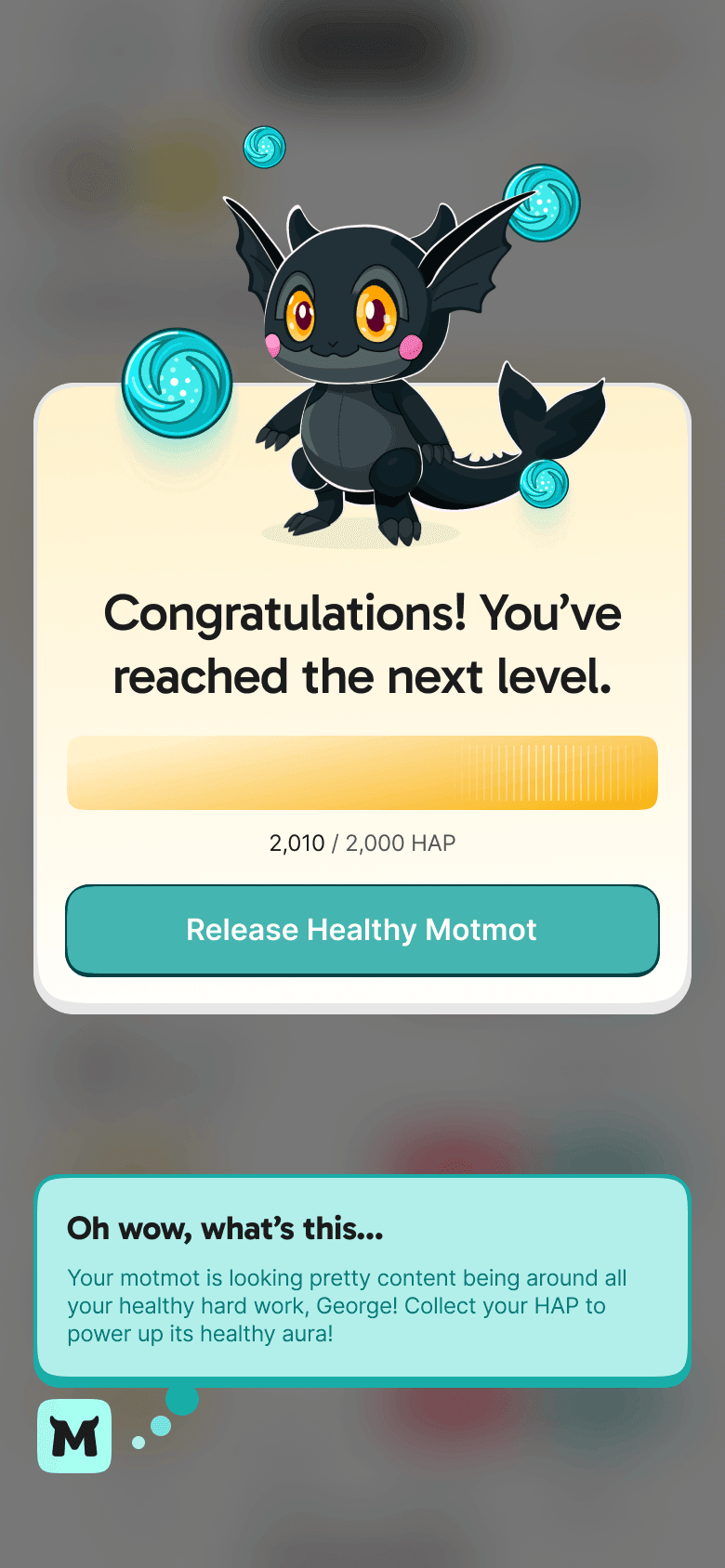The Fitness Habit That Actually Sticks (Because It Doesn't Feel Like Work)
Discover why 87% of fitness apps get deleted in 30 days, and how Motion users stay active for months (even years) by making movement genuinely enjoyable, never overwhelming.

Another January, Another Failed Fitness App
Your Fitness App Graveyard (We've All Been There)
Couch to 5K: Week 3, gave up when you missed two days
MyFitnessPal: 47-day streak broken, never opened again
Strava: Embarrassed by faster friends, quietly deleted
7 Minute Workout: Lasted exactly 7 minutes
That $80/month app: Cancelled after the free trial
Sound familiar? You're not alone. Research shows 77% of people abandon fitness apps within 30 days.
Why Traditional Fitness Apps Create Habits That Die
The Streak Tyranny: Miss one day? 47-day streak: GONE. Motivation: DELETED. The all-or-nothing approach that punishes real life. The Intensity Trap: Start with unsustainable enthusiasm. Burn out by week 2. Classic. The Comparison Killer: Everyone else seems fitter, faster, better. Why bother? The Guilt Machine: Missed your goal? Here's a red X and a disappointed notification. That'll definitely help! (Narrator: It didn't.) The Novelty Cliff: Fun for a week. Boring by week 3. Deleted by week 4.
Start smarter: Before diving into strict calorie tracking, understand your TDEE (Total Daily Energy Expenditure) to set realistic nutrition goals that actually match your lifestyle.
The Truth About Building Lasting Habits
Habits don't form from intensity, willpower, or shame.
They form from consistency, enjoyment, and flexibility.
Most fitness apps haven't figured this out. Motion has.
What Science Actually Says About Forming Exercise Habits
The 66-Day Myth (And Reality)
You've heard "21 days to form a habit." That's marketing nonsense.
Research from University College London found habit formation takes anywhere from 18 to 254 days, with an average of 66 days.
But here's the key finding everyone misses: Missing a day didn't affect habit formation at all.
The Four Pillars of Habits That Last
1. Cue Consistency
Same trigger, every time. Not "exercise when you can" but "exercise after
morning coffee" or "walk during lunch break."
2. Intrinsic Motivation
Self-Determination Theory
research
shows external pressure (guilt, shame) creates short-term compliance.
Internal motivation (fun, connection) creates lasting change.
3. Appropriate Challenge
The Goldilocks Principle: Not
too hard (overwhelming), not too easy (boring), but just right for YOUR
current ability.
4. Social Reinforcement
People with accountability partners are 65% more
likely to succeed. Add
regular check-ins? 95% success rate.
Why Most Apps Fail at This
They focus on outcomes (lose 20 pounds!) instead of process (move daily).
They punish misses instead of celebrating attempts.
They push intensity over consistency.
Motion does the opposite.
How Motion Makes Exercise Habits Inevitable
1. The Adaptive Sweet Spot
Motion's adaptive goals automatically maintain the Goldilocks zone:
- Never too hard (you won't quit from overwhelm)
- Never too easy (you won't quit from boredom)
- Always just right for THIS week of your life
David from our testimonial nailed it: "It adapts when I'm busy, rather than making me feel bad."
2. Intrinsic Motivation Through Play
Your Motmot transforms exercise from obligation to play:
- You're not "working out" - you're caring for a digital pet
- Emotional investment that doesn't rely on willpower
- Fun that doesn't wear off (ask any 90s kid about their Tamagotchi)
3. Flexibility That Respects Real Life
Traditional app: Missed Monday's workout? STREAK BROKEN. FAILURE.
Motion: Missed Monday? No problem, you have all week to hit your goal.
Busy week? Goal adjusts down. Life happens.
This flexibility is why David is still using Motion after 8 months when he
"deleted every fitness app" before.
4. Social Support Without Shame
The Motion community celebrates consistency over intensity:
- Your 2,000 steps matter as much as someone's 20,000
- Weekly battles where effort counts, not absolute fitness
- Accountability partners who understand bad weeks
5. The Light Touch That Works
Motion doesn't nag, guilt, or overwhelm:
- Gentle reminders, not aggressive notifications
- Celebrate wins without punishing losses
- Background presence, not life takeover
As David said: "It's a light touch" - and that's exactly why it works long-term.
6. Progress You Can See
Watch your habit form in real-time:
- Week 1: Forcing yourself to check the app
- Week 4: Automatically opening it with morning coffee
- Week 8: Moving more without thinking about it
- Month 6: "How did I ever not do this?"
Your 8-Week Habit Formation Roadmap
Based on Real Motion Users Who Succeeded
Weeks 1-2: Discovery Phase
- Download Motion, meet your Motmot
- Don't change anything - just track your natural movement
- Join the Discord, introduce yourself
- Goal: Open the app daily
Weeks 3-4: Tiny Habits Phase
- Add ONE small consistent behavior (5-minute morning walk, stairs at work, etc.)
- Find an accountability buddy with similar goals
- Celebrate every tiny win
- Goal: Consistency over intensity
Weeks 5-6: Momentum Phase
- Your goals naturally adjust to your new normal
- Start a weekly battle with friends
- Notice you're moving more without forcing it
- Goal: Maintain without increasing
Weeks 7-8: Identity Shift Phase
- You're now "someone who moves daily"
- Missing a day feels weird (not guilty, just off)
- Movement becomes automatic
- Goal: Recognize you've built a habit!
The Secret: You're Not Building a Fitness Habit
You're building a:
- Pet care habit (check on your Motmot)
- Social habit (compete with friends)
- Game habit (collect points and rewards)
- Data habit (track your trends)
The fitness just happens automatically. That's the magic.
Frequently asked questions
If you have anything else you want to ask, reach out to us.
How long does it really take to form an exercise habit?
Research shows an average of 66 days, but it varies widely (18-254 days). The key isn't the timeline but consistency. Motion users typically report exercise feeling 'automatic' after 6-8 weeks of regular use.
What makes Motion different from other habit-forming apps?
Most apps use external pressure (streaks, guilt, comparison). Motion uses intrinsic motivation (fun, community, adaptive goals). Research shows intrinsic motivation creates lasting change while external pressure only works short-term. Plus, our effort-based system means you're never overwhelmed or under-challenged.
What if I've failed at building exercise habits before?
Past failure usually means the approach was wrong, not you. Motion's flexibility (no broken streaks), adaptability (goals that adjust to your life), and genuine fun (pets, battles, community) address why most habits fail. We have thousands of users who failed elsewhere but succeeded here.
Do I need to exercise every single day?
No! Motion uses weekly goals, not daily streaks. This flexibility is crucial for habit formation - research shows missing occasional days doesn't hurt habit development. Some weeks you might move 5 days, others 3. The habit is checking in and staying engaged, not perfect daily execution.
How do Motion's features prevent the usual drop-off?
Multiple reinforcement systems: Your Motmot provides emotional investment, weekly battles create social accountability, adaptive goals prevent overwhelm, and the community celebrates consistency over perfection. When one motivation dips, others maintain the habit.
What's the minimum commitment to build a habit?
Start with just opening the app daily and moving enough to keep your Motmot happy (can be as little as 500 steps). The habit starts with engagement, not exercise amount. Most users naturally increase activity once the checking-in habit is established.
Why don't broken streaks matter in Motion?
Streaks create fragile habits - one bad day destroys everything. Motion uses weekly rolling averages and 12-week patterns instead. This means bad days are expected and don't break anything. Habits need flexibility to survive real life.

